Eleonora Usseglio-Prinsi talks to the Spanish designer about how workshops, prototypes and hand-work are the ingredients for a new recipe in innovative design production
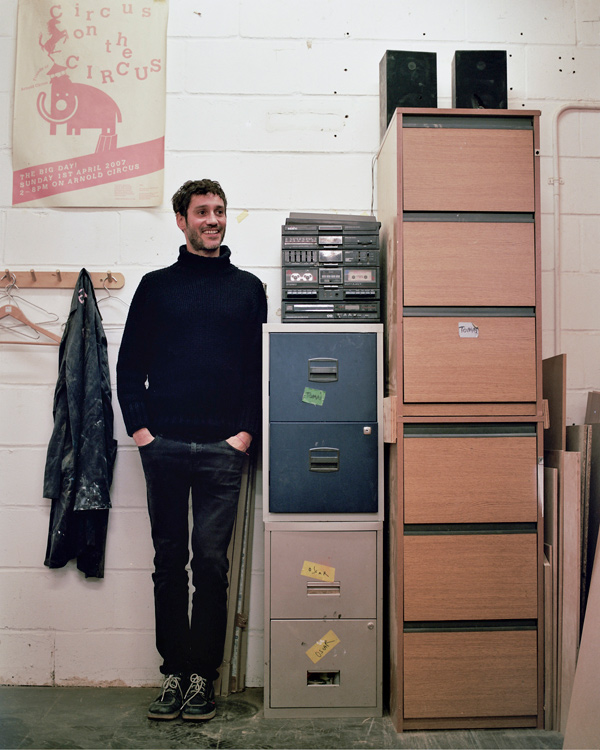
“Peering through a window into a carpenter’s shop, you see inside an elderly man surrounded by his practicians and his tools. Order reigns within, parts of chairs are clamped neatly together, the fresh smell of wood shavings fills the room, the carpenter bends over his bench to make a fine incision for marquetry”. —The craftsman, Richard Sennett
This is definitely not the description you’d apply to the studio of Tomás Alonso, but his captures the same romantic atmosphere of a traditional workshop, which has been morphed into a contemporary and innovative design hub — where the authenticity of process and a strong relationship with materials and shape put the power of creation back into the hands of the designer.
Tomás left Spain for America when he was 19 years old to study English. Whilst there, he met an agent who offered him a job in his wheel-rim design company and, at same time, offered to pay for him to study drafting. After seven years in US and one in Australia he decided to return to Europe, where was accepted into the RCA here in London. In 2005, with some colleagues, he opened the OKAY collective.
Eleonora Usseglio Prinsi: How has your cosmopolitan educational background influenced your work?
Tomás Alonso: Designing is a mix of industries, cultures and people. [It’s really useful to] see and meet people who are used to doing and using in another way. Other experiences come from how objects are made and produced. All these aspects help you develop your capacity as a designer. You benefit from experiencing as many different things you can — like drawing wheel rims . Maybe it could be boring, but when I started, I learned a lot about how it’s produced, aluminium objects and the technology it.
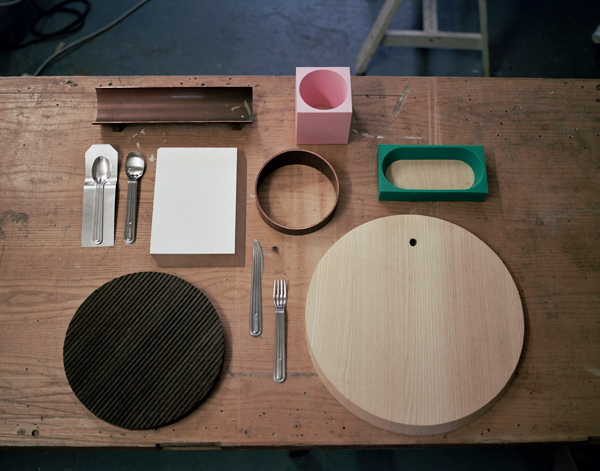
Ele: Who is the master that most inspires your work?
Tomás: I really like the designers of the 50’s. I like the work of Castiglioni because he had a practical sense; he looked for really simple solutions, but with his own personal style. I identify myself in this way — I try to find simple solution using things that are around me. Jean Prouvé, another iconic designer is also an inspiration. I am interested in how he saw inside out, and vice versa, all at the same time he was producing a piece of furniture, an object or a house. In fact, he was more engineer than designer in the way he understood the production process. For this reason he could develop new solutions. The designs that he made are still “contemporary”, because he was looking for new ideas. I really admire him for it. The same for Eames or Colombo.
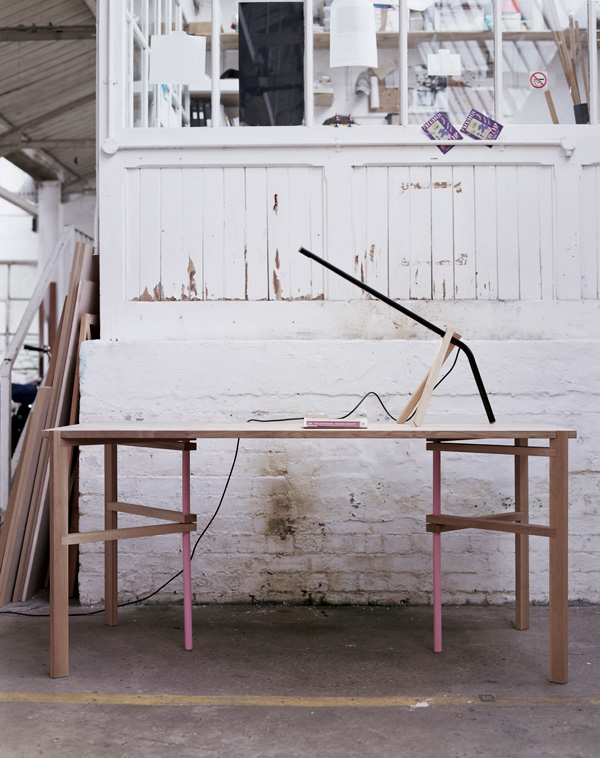
Ele: Observing your collection of design objects, it seems many look like “stackable toys” in that the individual object isn’t important, rather how every single component works in relation to the others — is that a way to make explicit the research behind your designs?
Tomás: I like things that are honest. I don’t want to hide the function or how the object is created — that should be part of the final result. In a way, I try to leave the materials “naked” so that you can see them as it is, and so you can see how it works. For sure, there’s an aesthetic element, but it is more about how the object is, and how you are going to use it. It’s a balance of these things; I try to reduce [it to its simplest form] to stay with the essential.
For the desk commissioned by Karimoku, the coloured table legs are the fundamental element of the table because they are also the hinge that closes the table. On one hand, they’re the most important element, on the other, they are created using another material — metal — that [in order to be protected] needs to be finished. I decided to paint them because it works better within the general language of the piece. I like to work with the contrast of metal/wood — artificial/natural.
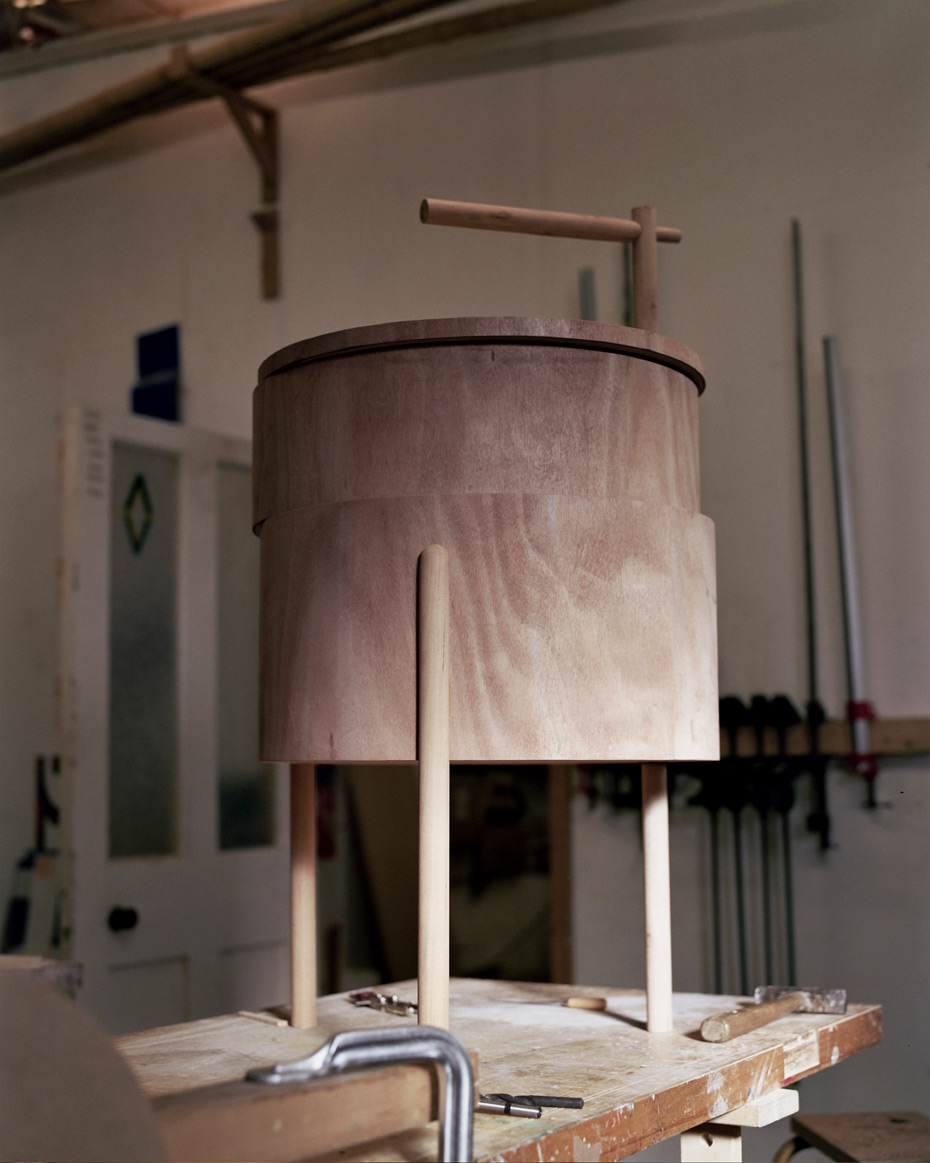
This table was born from the idea of creating a collapsible table that is adaptable to the way we live today in our homes. For a long time furniture meant big, heavy, cumbersome objects. But now houses are smaller than before; people change homes more often. We need furniture that is adaptable to our way of living, not the opposite.
Ele: What about your project the Tools Box, also on show at the last Interieur Biennale in Belgium?
Tomas: Tools Box is a great project from IN Residence in Turin. The organisation arranges workshops and asks international designers to spend one week with design students. It is really interesting . We share our way of working with the students. Every two years, they organize an exhibition where they invite the designers who’ve participated in the workshop to produce new pieces. In the last exhibition, Another Terra, the brief took inspiration from the discovery of the planet Kepler 22b that has an atmosphere similar to the Earth. They gave us a wooden box to fill with objects that could be useful to take on [a hypothetical] trip to Kepler 22b, a concept that is both simple and deep at the same time.
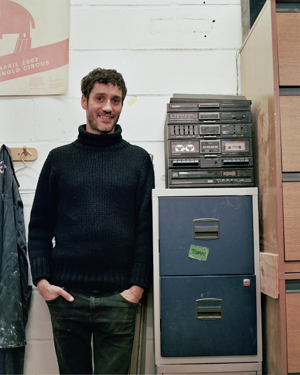
Tools Box gave us the opportunity to start at the beginning [of history], but without forgetting knowledge we have already learned. During this project, I was reading The craftsman by Richard Sennett, about our need as humans to make things by hands. His theory is making a chair, cooking or ironing clothes, you need to use your hands, and that are really important for us. If we were more conscious of it, if we spent half an hour a day doing something by hand, the world would be better. For me it’s the same when I am in the workshop to making something.
Taking inspiration from this book, we thought that with these tools you could build everything you need [to thrive]. We studied Japanese joints that don’t use screws or nails, (in this way you aren’t dependent on any industry). On the instruction booklet, we added drawings of these joints, as well as information on how to maintain the tools and fix them if they break. For the shape of the tools, again we were inspired by the Japanese, the masters of woodwork.
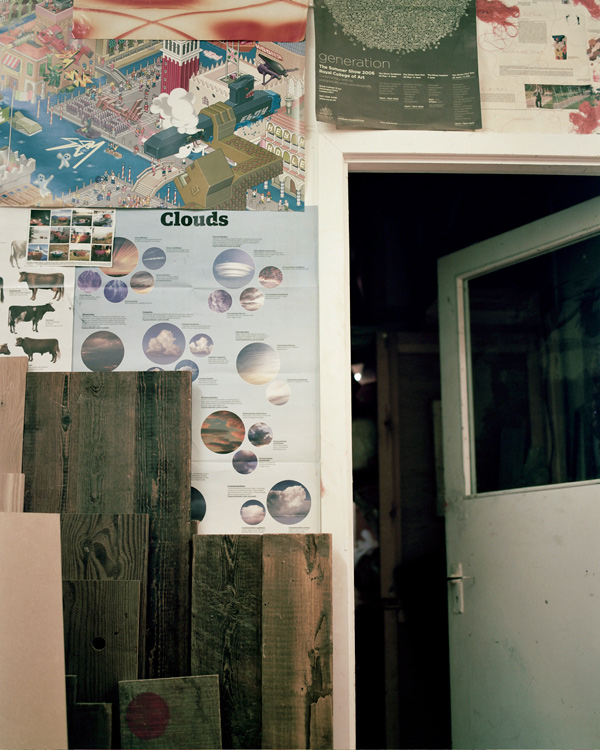
Ele: How does it add to your work be able to control the design from drawing to prototype, using your workshop?
Tomás: It is fundamental. The only reason why we are here is that we want have to a workshop. The entire collective has this conviction that to design a good object, you must keep trying it physically up to the point it is completely finished. There are projects in mental that are produced entirely here, tailored pieces or commissioned for galleries. But even for the production of these type of objects, you need prototypes to verify that they work, especially when the final pieces are “essential” objects — you always need to try them, to develop this simplicity. When I have an idea, I always sketch it, but I am always going into the workshop to check the principle can work.
See more of Tomás Alonso’s work, and the OKAY Collective here





